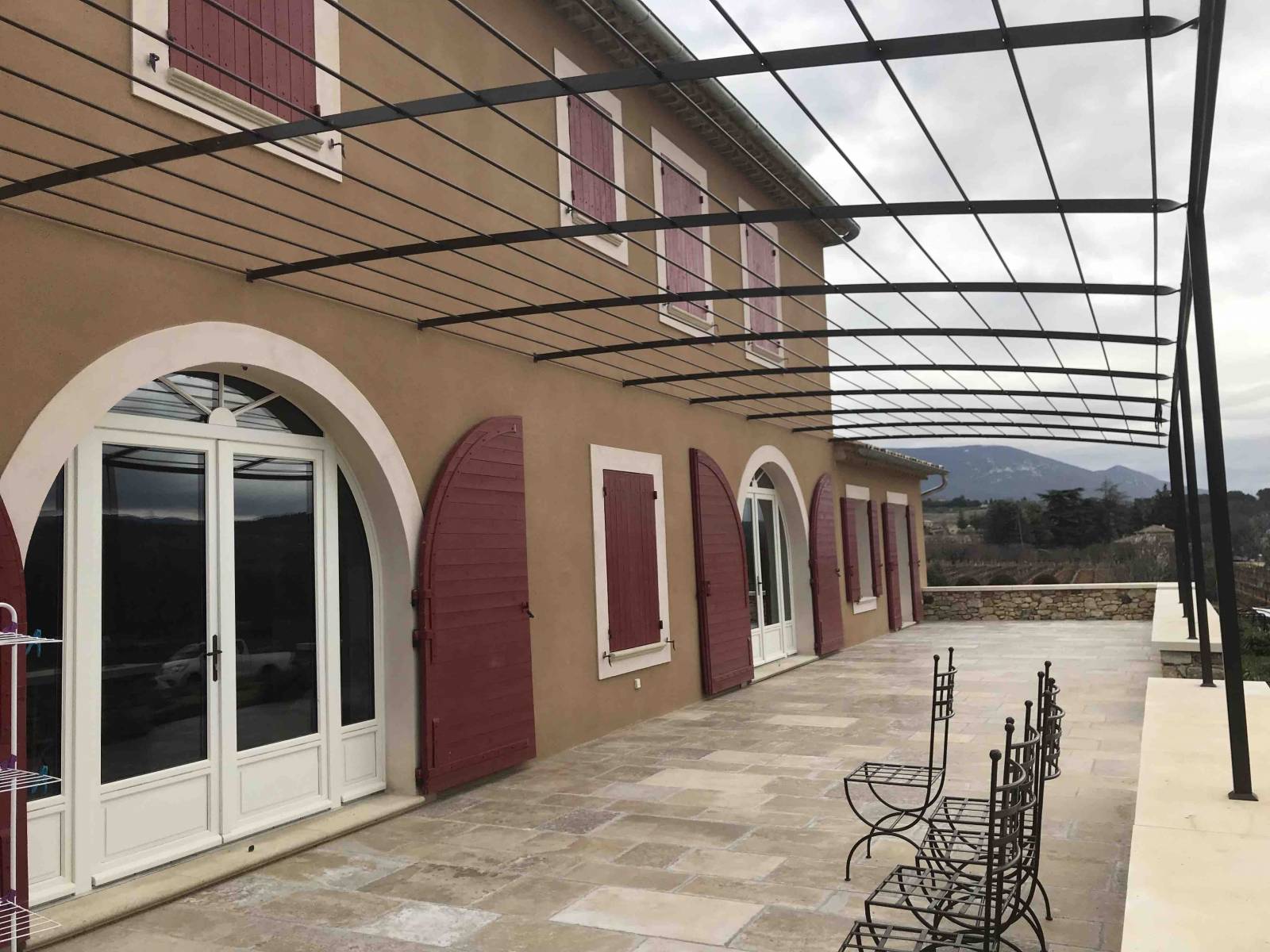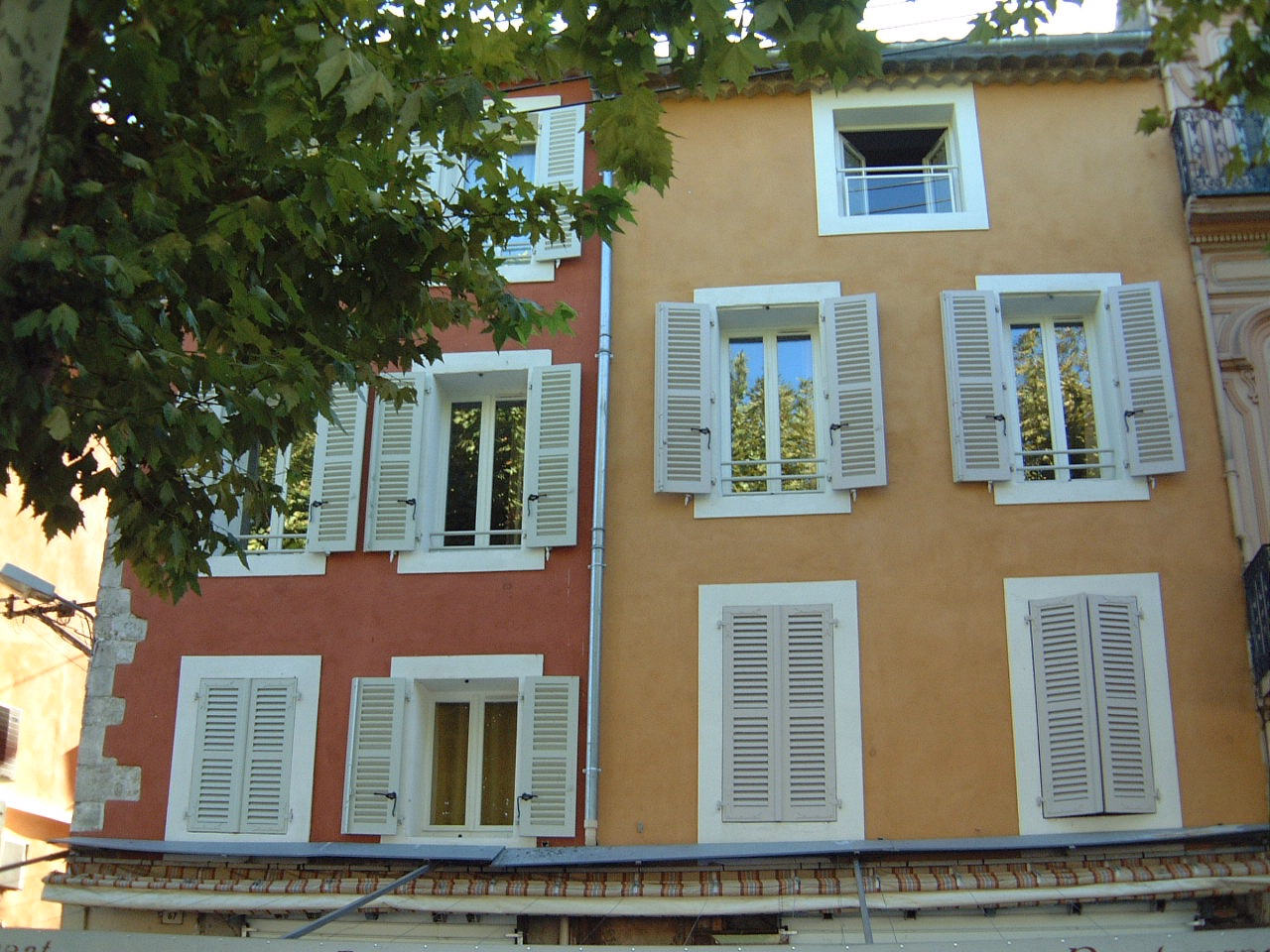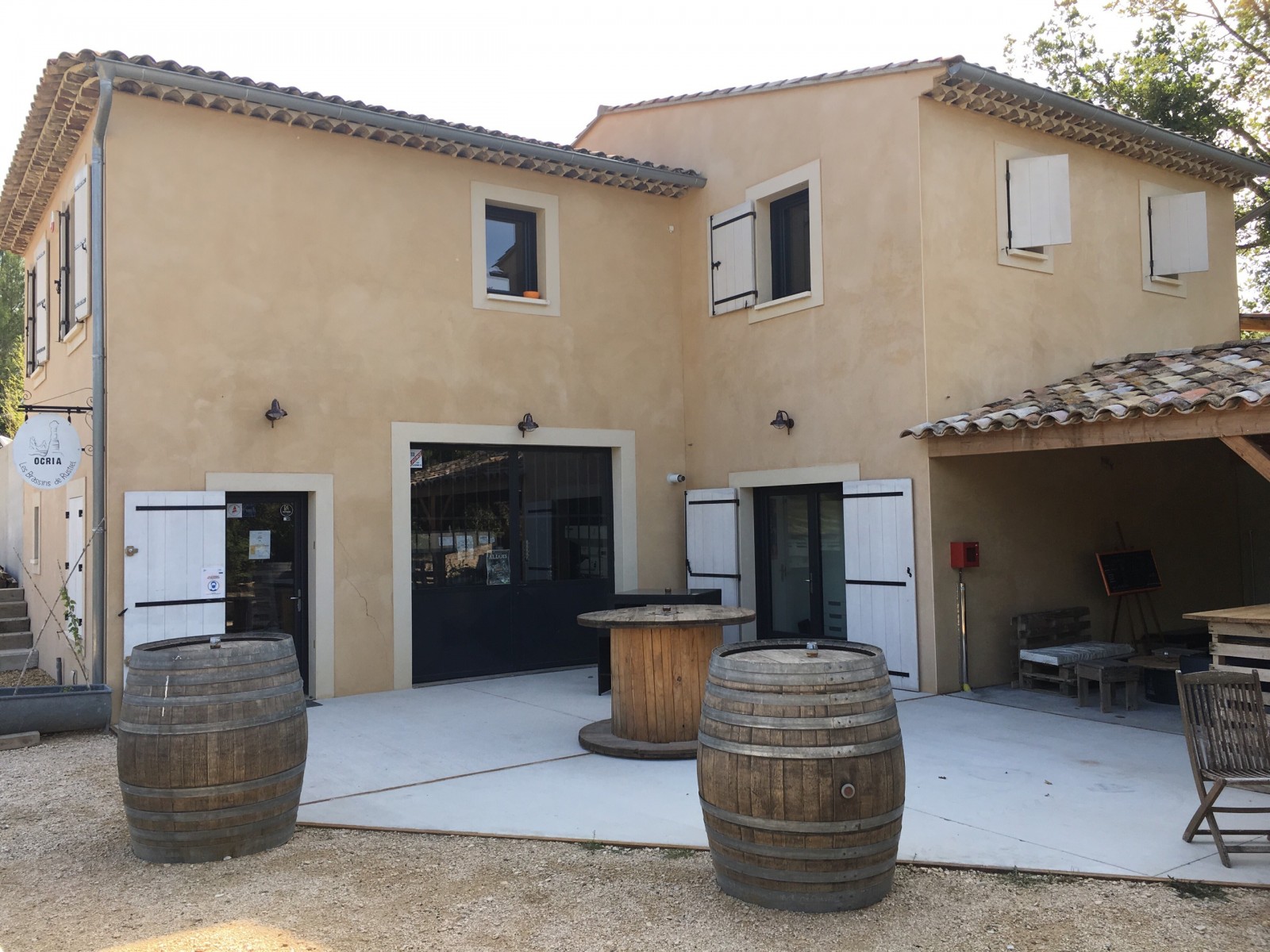Lime based coating
A bit of history
At the end of the Middle Ages, stone is first used, then the wooden structures leaves their place to the lines in bricks and strips in plaster or lime.
The modern period (20th century) brings new constructive technologies and new materials (cement and all its variations). With the industrialization of the construction, and to meet the growing needs, the coatings were manufactured by the industrialists imposing a uniform composition ignoring the local particularities : cement reigned as master at the expense of lime coatings, imposing in the consumer’s mind a degraded image of lime.
A coating according to our traditions
When restoring or constructing its coating, it is essential to keep in mind that the coating is a regional identification factor by its color and texture. It must be composed with materials according to its climate.

Realization & photo sent by BG Construction


Realization & photo sent by BG Construction
Which color to choose for my coating ?
* Hauts-de-France, which now includes le Nord and Picardie, is a region renowned for its red brick houses. Light colours are now preferred. The facades are often white or slightly cream but often continue to display a very bright red as a reminder to the traditional brick.
* In Aquitaine and in the Midi-Pyrénées, we allow ourselves certain fantasies : bright red and dark green in the Pays Basque, rose in Toulouse, white with saffron yellow in the Tarn and grey. The shades are varied and far from sad.
* In Auvergne and in the Limousin, the colours of natural stone are privileged. The facades are therefore greyed out. Towards the south of the Limousin, the shades become lighter, and pull towards the pink in the Creuse.
* In Bretagne, we find the whole palette of grey as a reminder of granite.
* In Pays de Loire the tuffeau makes the facades lighter and white. While in Charente we find brick, pink granite and "pisé" that diversifies the shades.
* Ile de France, Champagne, centre : du blanc à l'ocre en Ile de France avec des tons chocolatés à Paris. Les couleurs sont plus dorées en Champagne.
* Alsace, Lorraine, Ardennes : we find shades of red, yellow and green cohabitating with natural wood.
* Influenced by "pisé" and clay earth, the colours of the facades of the Vallée du Rhone, Bourgogne and the Alpes offer a beautiful range ranging from ochre for the Savoie, to grey of alpine stone, to taupe hues of Bourgogne plaster.
* In the south : Provence, Languedoc-Roussillon, the Ochre coating reigns and offers a palette of hues ranging from golden sand, to Provençal pink through orange and red hues.
Implementation :
Weather conditions are important. Do not apply the coating below 5°C and above 30°C. The ideal season for your work will be spring or fall.
The support on which the coating will be applied should be solid, clean and rough.
The composition of the mortar*
The coating can be made with a "bastard" mortar which is a mixture of aerial lime and hydraulic binder + sand + water. Or with a lime mortar without addition of hydraulic binder and in which case, it will not fit the bedrock and it will need to be protected with a tarp from rain, sun and wind for several days. This mortar will be formulated as :
1) Gobetis : 1 volume of aerial lime + 2 volumes of sand (0 to 5 mm) + water - 5 mm thick.
2) : Dressing : 1 volume of aerial lime + 2.5 volumes of sand (0 to 3 mm) - 10 mm thick.
3) Finish : 1 volume of overhead lime + pigment (1 to 10% relative to the weight of lime) + 2.5 to 3 volumes of sand + water - 5 mm thick.
Warning : between dressing and finishing, it will take about 3 weeks.
* information from the Guilde des métiers de la chaux
You can't find a free facade maker for six months ? The term "lime" does confuse your mason ? You don't have the materials you need to make your coating ?
Our ready-to-use coatings are here !
Don't forget primers (undercoatings) essential for both construction and renovation. The Rénodress will allow in renovation to realize a perfect dressing and Tradichaux will allow you to make your gobetis and your dressing in new construction.
And for your finish, you can choose the Sofolith coating in the colour chart of our 24 classic natural shades or the elegant Sofodor, for a thin coating with more varied shades.
